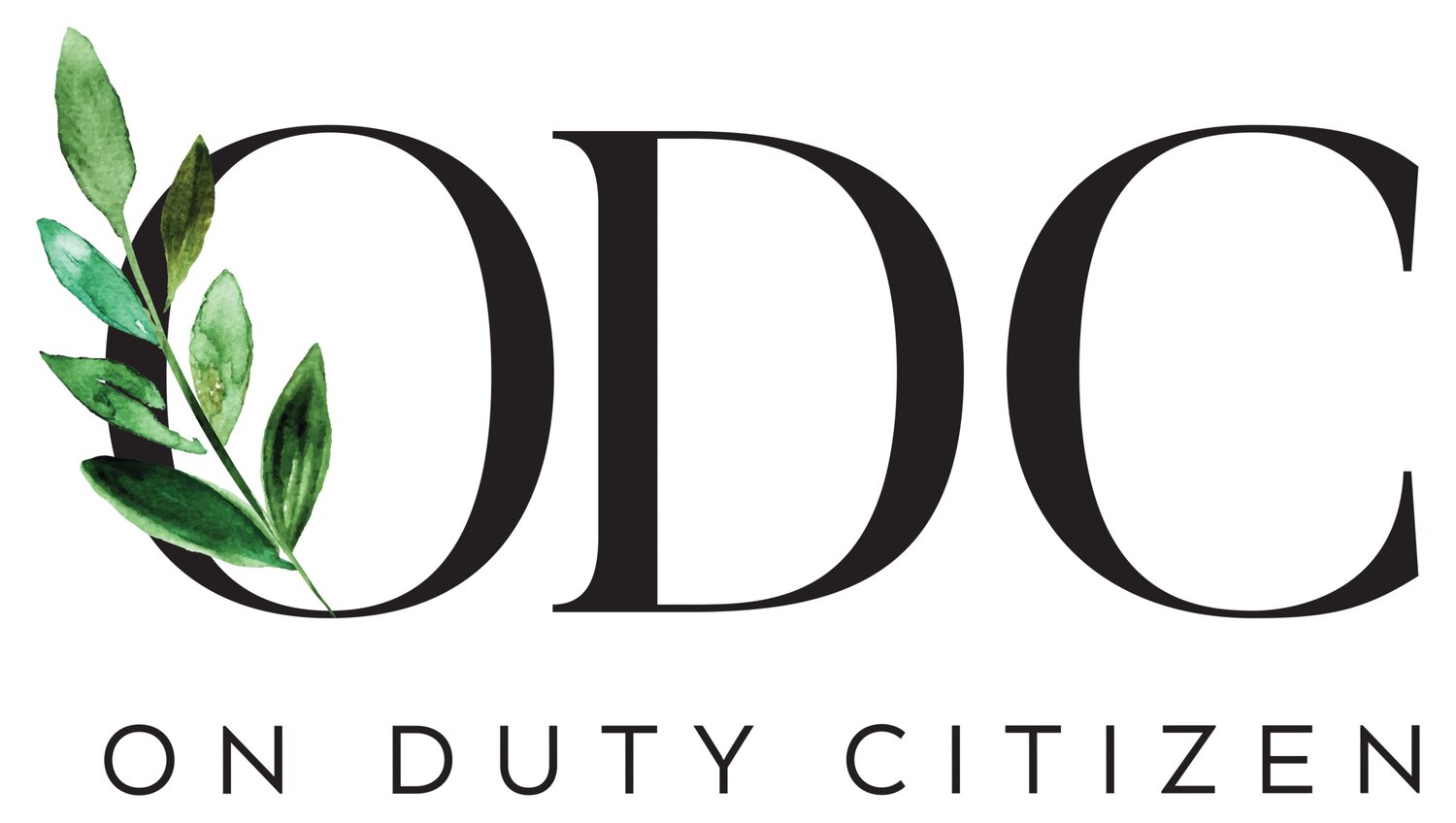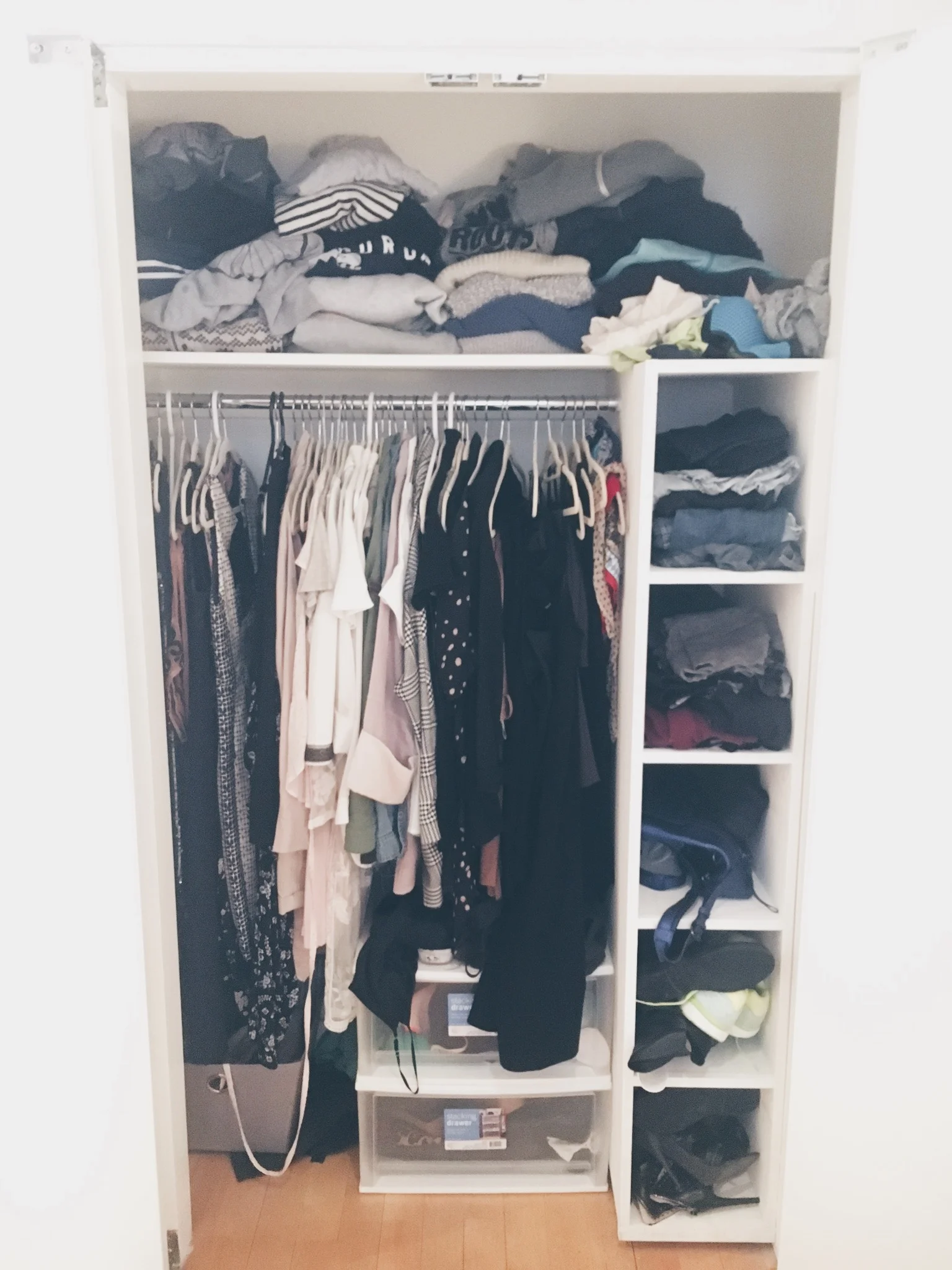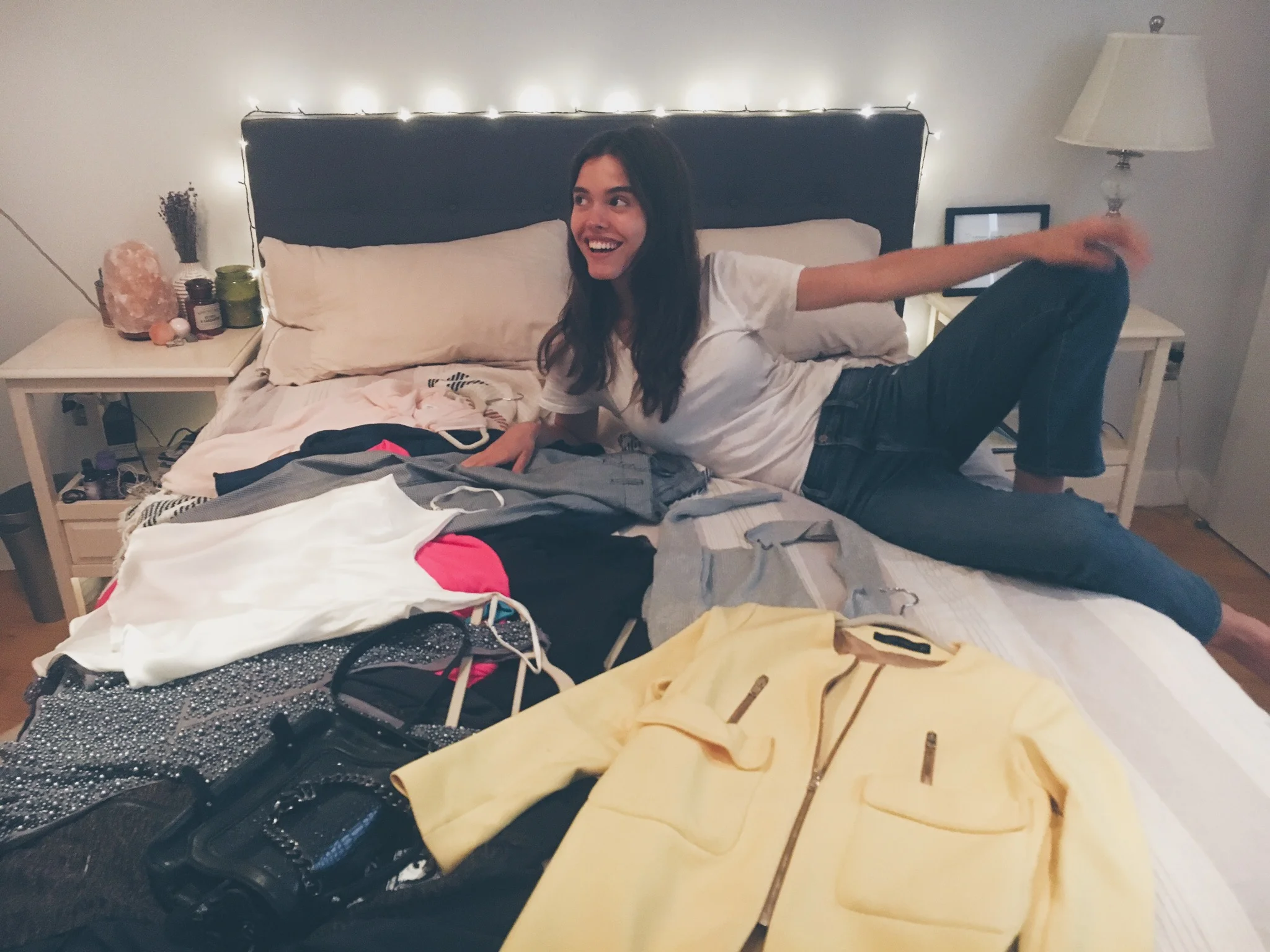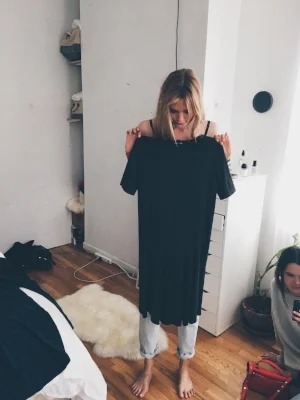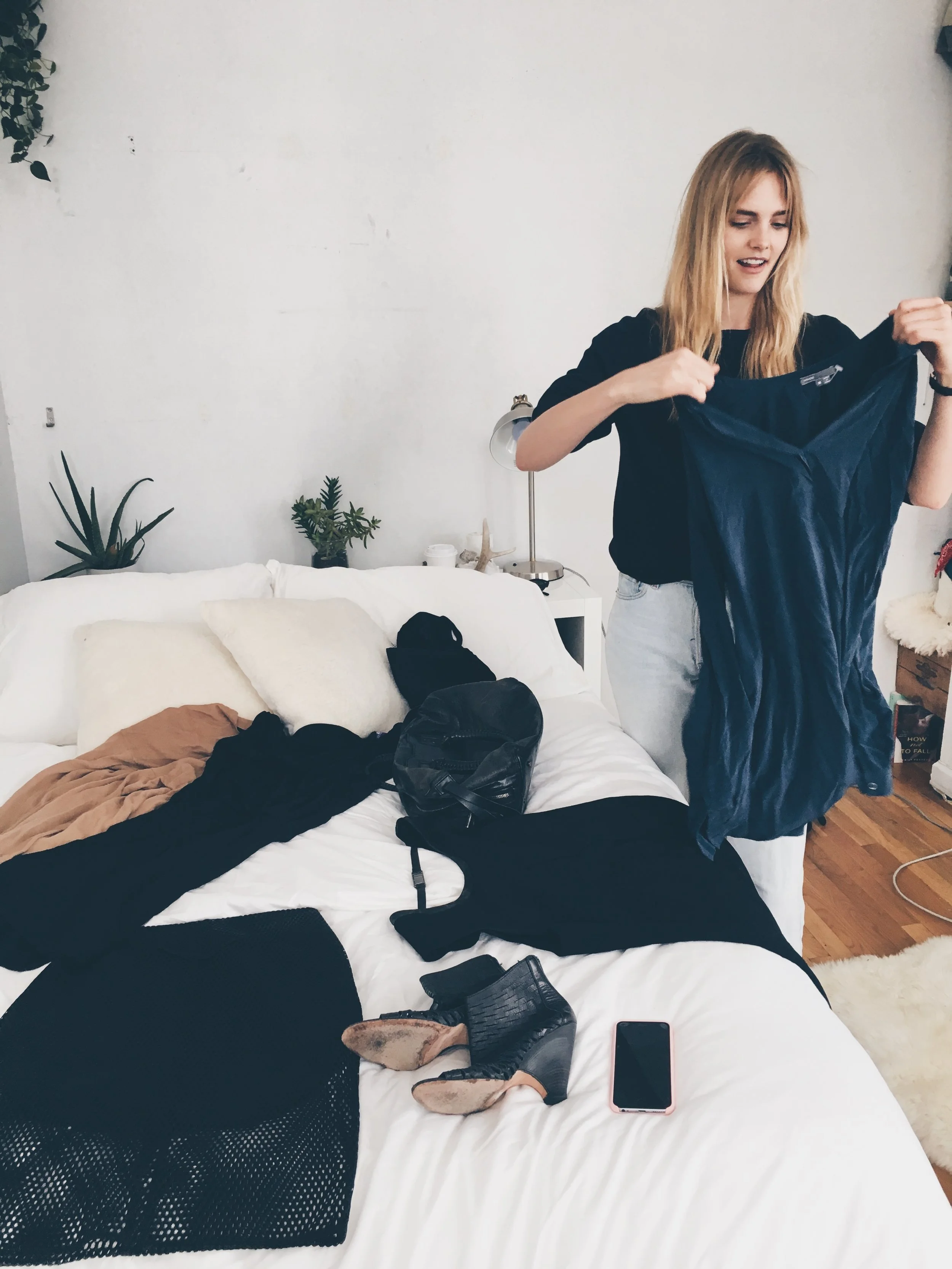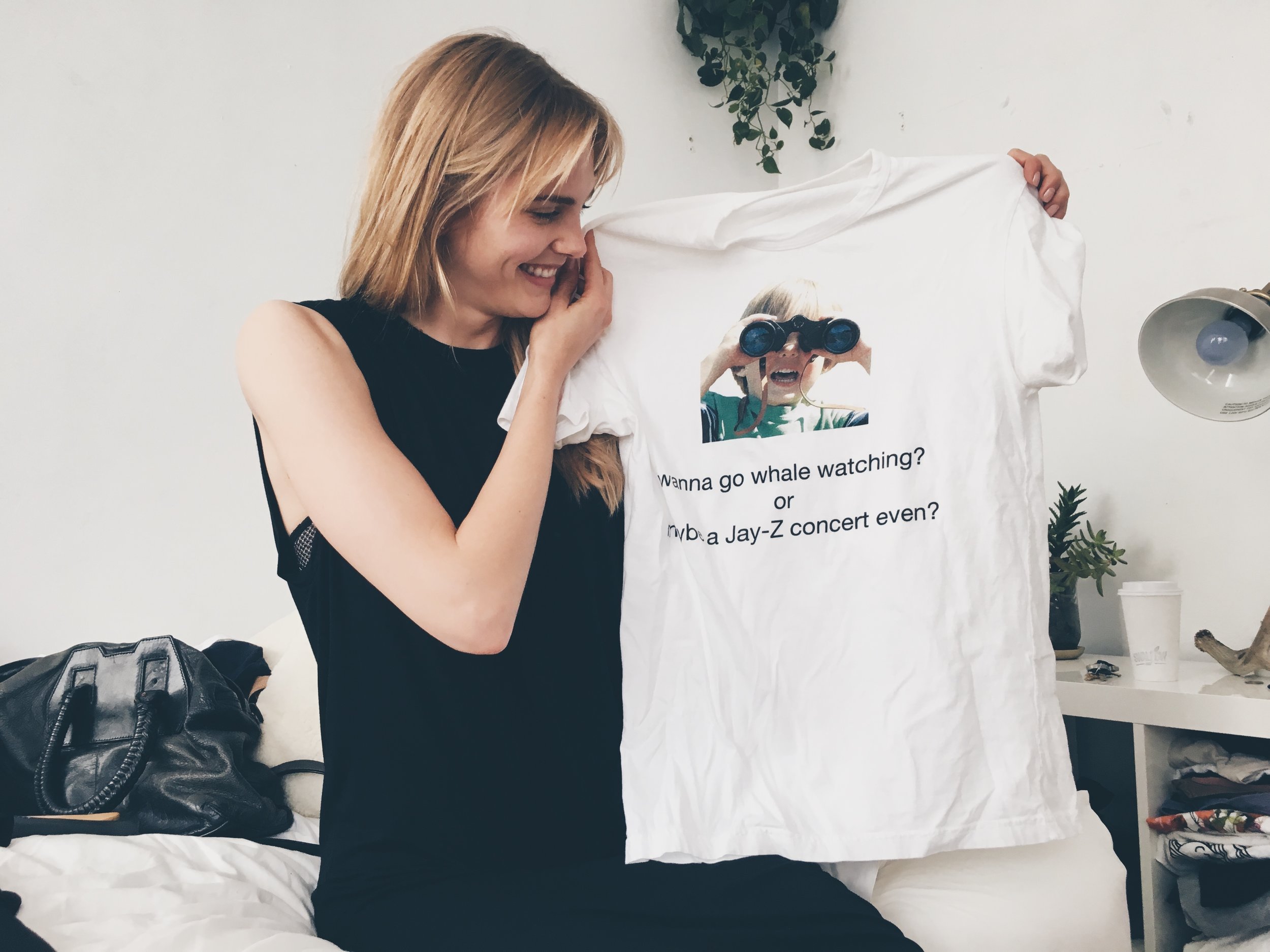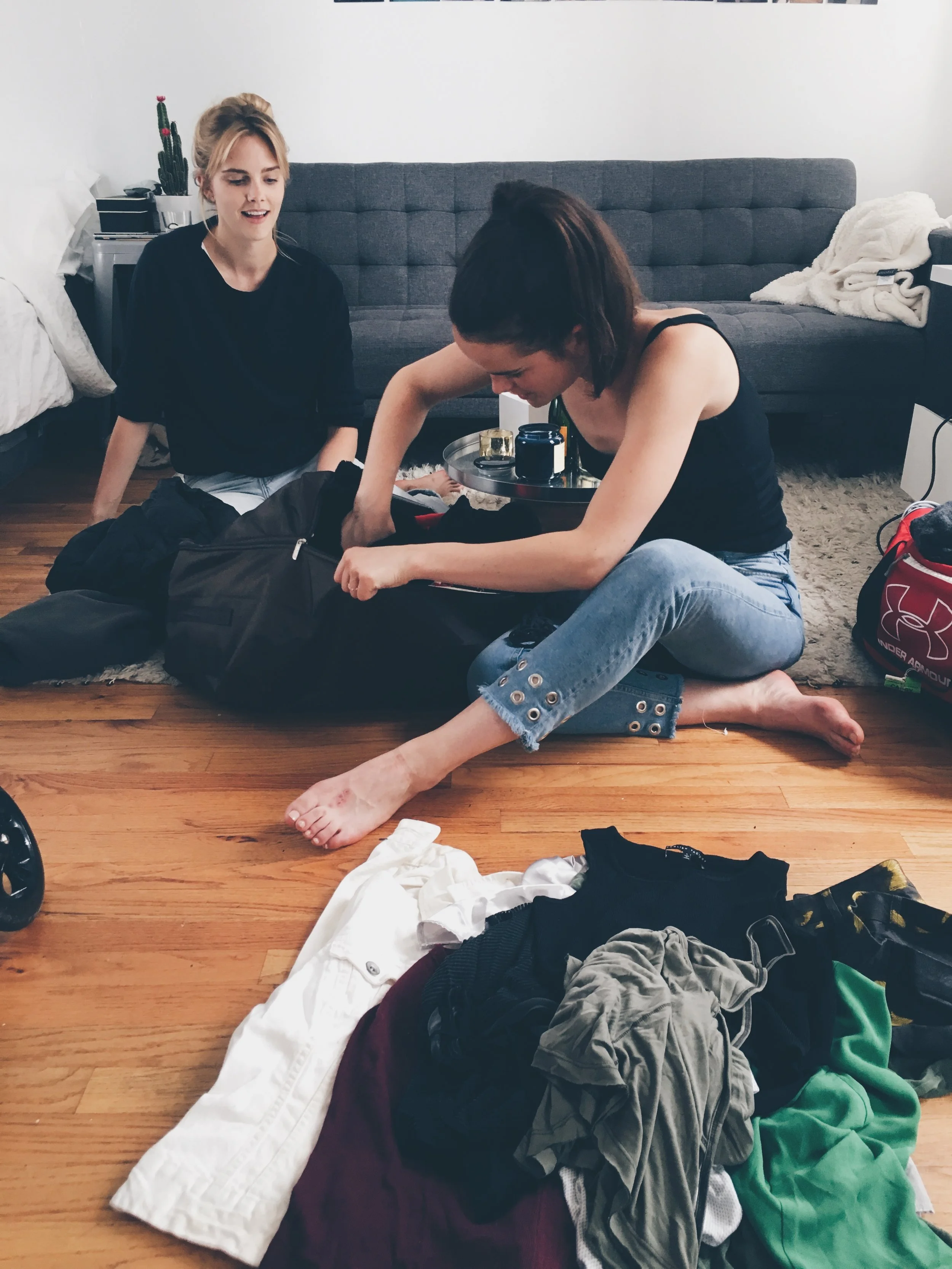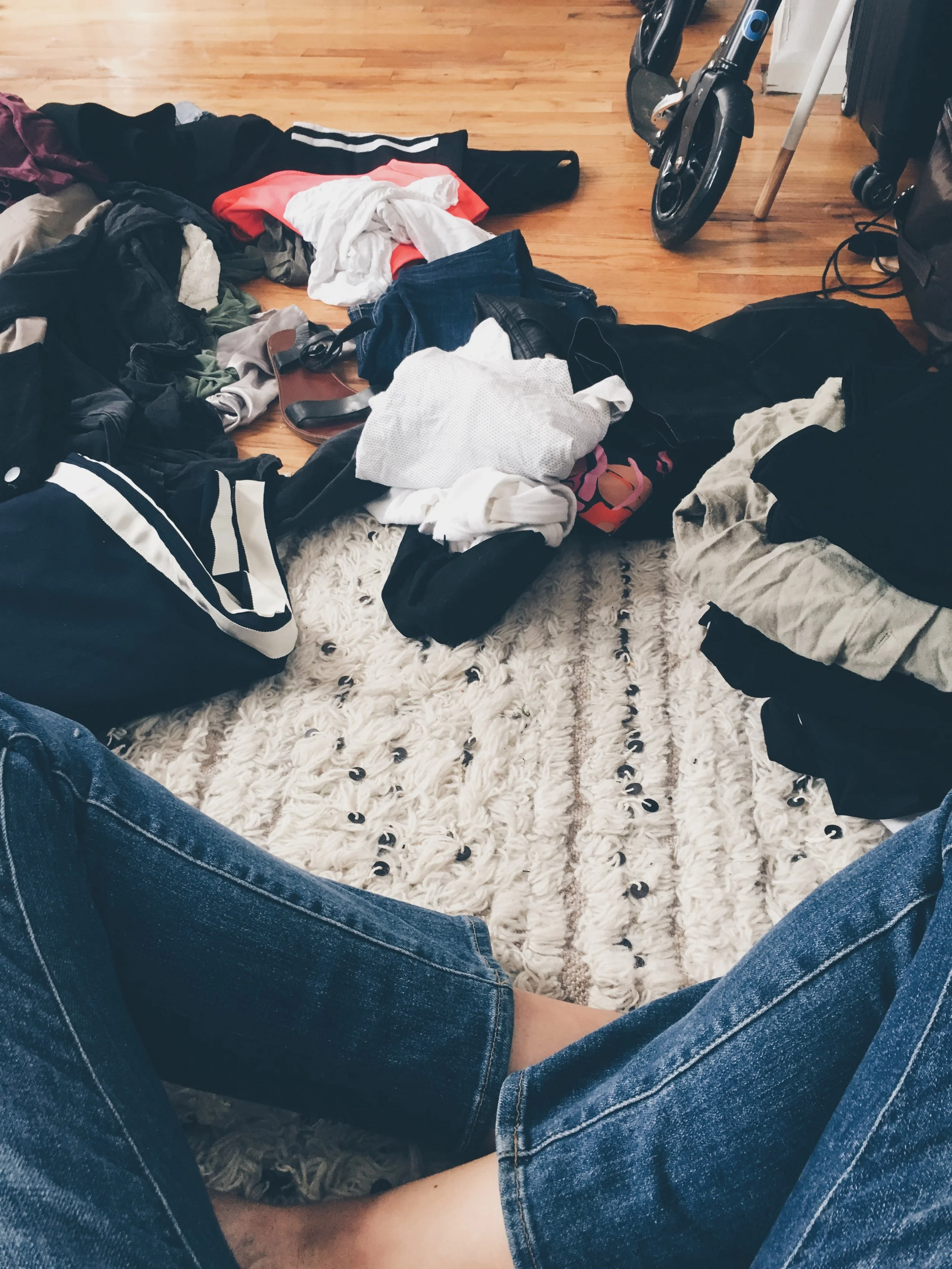Too much stuff!
That's how my friends and I felt about the amount of clothes we own. Our New York closets were always bursting at the seams and we felt it was time for a little spring cleaning.
We realized, especially having careers in fashion, that we easily get caught up in the amount of stuff we're made to think we have to have. At one point in time, New York closets were made for the few outfits you had, the type you would mend if anything needed repairing and would last you a lifetime. Buying clothing (or even buying the fabric to make your own clothes) was an investment that took a long time to save up for. However, as we modernized, our perceptions of the amount of clothing we had to have drastically changed. Fast-fashion, when companies sell as much as they can for as cheap as they can, was introduced and the average amount of clothing people owned exploded. The small-sized closets that were once sufficient for many people to share are now the biggest draw back of finding an apartment in New York; is there ever enough closet space?
When I read Marie Kondo's "The Life-Changing Magic of Tidying Up" I began to realize the importance of loving absolutely everything you owned. When I looked at my closet I didn't see things that brought me joy, instead I saw an overwhelming amount of clothes that were bought on a whim, clothes that were bought because they were on sale and clothes that were bought because they were in style. The few things I had that brought me absolute happiness were things that made me feel good when I wore them, something a $5 shirt with no story attached could provide.
With Marie Kondo's book as my new inspiration, I began going through my closet with the changing of each season and re-assessing what I had and what could get more love from another home. This year, instead of a solo spring clean I decided to pitch to my friends a sustainable Sunday where we could go through each of our closets and choose things we wanted to swap and things that would be put in a pile for donations. We decided to start at my place with coffees. What followed was thought-provoking conversations of sustainability in fashion, a good amount of laughs and a huge pile of clothes we no longer loved (or unfortunately never really loved) that we hoped would find more use in another home.
I realized a lot of the things that were getting swapped out of my closet were bright colors that didn't match much else and had only been worn once at most, some things still had tags on them. Having that extra set of eyes helped when deciding if something would stay or go; if there was any hesitation and I had to ask Dani and Zoe if I should let something go, it had to go. What was left was a closet that could breath, things that provided me with absolute joy and most of which all matched. Success!
After my place we visited Dani's apartment in Bushwick. Another fun part of this afternoon was that we got to walk through neighborhoods we didn't usually frequent. Dani had some amazing staples, some fun things that she loved and continued to bring her joy and after trying on some pieces she was unsure of we added to the pile of donations. Zoe got a nice new crop top she felt she could give a bit more love to and we continued on to her place after.
After our walk to Zoe's apartment in Williamsburg, and some much needed refreshers, we sifted through Zoe's closet and added to our growing pile. What amazed us was how much stuff we had and how little use a lot of these items got.
A key takeaway we all learned was the importance of differentiating between needs and wants. We so often get caught up with idea that because something is on sale we must buy it or that because something is in style we have to have it, whether we really love it or not (guilty!). There is incredible power in removing yourself from the instant gratification of a shopping experience and thinking about the thing you are about to purchase as something you will actually love and wear for many years or another item you'll be bagging up for donations the following season.
If you find yourself overwhelmed with a daunting closet and the urge is always present to buy more, try and avoid mindless shopping altogether. If you need something, do some research into sustainable companies that are transparent with their practices and how they make and sell their clothing. Invest in items you truly love and need and they will be worth the extra money, especially given how long these items will last compared to any fast-fashion version. Second-hand shopping is also an amazing option to find hidden gems that add a bit of pizzaz to your closet of stylish basics. These items definitely have a story to tell and it's fun thinking about the life they've lived.
For a curated selection of stylish staples made sustainably, check out our SHOP section. You can trust that we've done the research. The looks we recommend are wardrobe staples that will have a long life and have come from a company whose values align with those of ours at ODMODC.
I hope someone else can find love and joy in the bag of items the three of us put together. The three of us are now much more cognizant of the amount of waste we were aimlessly collecting and are going to be much more thoughtful about our investments with our clothing in the future.
A successful sustainable Sunday with the ladies!
Here are a few of the easiest ways to donate clothes in NYC:
They pay 35% cash or 55% store credit of the price tags that they apply to your items
All items not selected for resale can be donated to charity as a service to our customers
The items that are collected are sold as not-profit items and the money is donated to a host of selected charities found here
When you buy something from Reformation online, they’ll include a free RefRecycling shipping label in your box. You can put that label on the box your stuff came in (or any other box), fill it up with whatever you want to recycle, have the box picked up at your door, and theyll 'do the rest.
You can even track where your clothes ended up!
Greenmarket Clothing Collection
Textiles are collected by Wearable Collections and taken to a sorting facility where they are sorted into different grades, with an effort to recover as much usable clothing as possible for distribution to second-hand markets. Material that is not suitable for reuse will go to recycling markets to be used as wiping rags or shredded for low grade fiber products such as insulation.
Check out grownyc.org for a list of all the places you can drop off your clothing in NYC
At Salvation Army you can donate furniture, automobiles, household goods and appliances in addition to clothing
Everything you donate will be sold at their Family Stores and the proceeds are used to fund Adult Rehabilitation Centers.
Salvation Army accepts drop-off donations or will even pick your stuff up for free!
